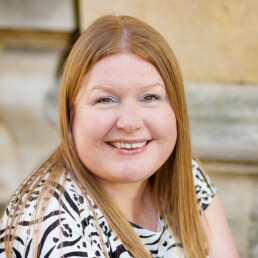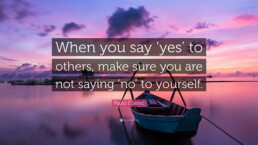
Hannah Wilson
noun. an act of choosing between two or more possibilities.
Following my 3 day weekend being trained to coach my clients for Fulfillment in early January, we spent another intense 3 days exploring how to coach for Balance. This is where the theme of Choices emerged from.
A lot of people say they want more balance in their lives. What we usually want is to feel that we are choosing our lives, not just reacting to them. Balance coaching is a way to guide people into making powerful life choices and actively manifesting the experiences they want most. Balance coaching makes us active participants in how we experience our lives.
Balance coaching is thus designed to create flow, restore alignment, and regain control of life. When conversations focus on what we have control over and what choices are possible, we help people gain new perspectives. This training weekend gave us the tools to empower our clients to define and pursue the experiences they want most, resulting in action that is alive, effective, and empowered.
Some of the coaching tools we developed and experimented with included: making resonant choices, building new perspectives, forwarding the action, being in flow, creating self-affirmations.
Ultimately, we are our choices. Below are a few of the quotes that remind me this:
“Life is a matter of choices, and every choice you make makes you”.
John Maxwell
“No matter what the situation, remind yourself, ‘ I have a choice’ “.
Deepak Chopra
“The 3 Cs of life: Choices, Chances and Changes. You must make a choice to take a chance or your life will never change”.
Zig Ziglar
As we unpacked the power of choice I began to make links between my CTI coaching training and some coaching training I had completed a few years ago, when I first left headship and transitioned into working independently, to become a Resilient Leaders Element consultant coach.
The RLE coaching framework which the Co-Founders Dr Jeremy Mead and Rachel McGill have co-created and shaped over a decade of people development really resonated with me when my friend Julie Rees introduced me to it. The self-assessment you do before you start your coaching relationship gives you a visual representation of how you see yourself across the 4 elements (Clarity of Direction, Awareness, Leadership Presence and Resilient Decision-Making) which are each underpinned by 3 facets. Later in the journey you also seek peer feedback and you can then compare how you see yourself to how you are seen by others.
In RLE resilient decision-making is broken down into our ability to make different decisions, in different ways, at different times:
- Creative decision-making – the ability to work outside of the usual frame of reference and take a valuable idea from concept to reality.
- Robust decision-making – combining intellectual rigour, evaluation and awareness, giving solid foundations and contingency planning.
- Versatile decision-making – creating options, responding to the needs and urgency of the situation, thinking and operating at the appropriate level.
The Impact
“Great decisions are made at the right time, with the right people, in the right place. Contingency options are always available so that the unexpected can be dealt with effectively and confidently”.
Completing my RLE accreditation during lockdown and at such a pivotal transition point in both my career and in my life, helped me anchor who I am and what I do, but it also helped me to forward the action as it gave me a framework to apply to myself and my emerging business:
- I had to be creative in my decision-making as I had to unlearn how institutionalised I was after 20 years of working in the system, I was also creating a new business from scratch and going through a rebranding process as a Leadership Development Consultant, Coach and Trainer.
- I had to be robust in my decision-making as I needed to make a living. It is scary going from financial security and job stability, when you venture into the unknown. I made the decision to take in a lodger for 6 months, just in case I did not make enough in my first few months to cover my mortgage.
- I had to be versatile in my decision-making as we unexpectedly found ourselves in a global pandemic and were thrown into working remotely. For many of my peers this was a major challenge as they had to flip their offer into a virtual one, I started my business at this time so embraced this new way of working and established it as the norm.
I spent a focused 6 months building my business and crafting my training and coaching offer for my network. I didn’t expect, nor intend, to be repeating this process 6 months later. But in the wake of George Floyd’s murder and the social justice activism my network made requests of me around formalising Diverse Educators and increasing our support/ training offer for schools.
My creative decision-making kicked in as we created a second website, my versatile decision-making was activated as I flexed my offer, and my robust decision-making grounded me as I sought partners to fund some of this collective project as I had invested what savings I had in the earlier process. So I made a choice to have two websites, two newsletters and two sides to my offer.
Although my work in leadership, coaching and training is clearly aligned and crosses over to the diversity, equity and inclusion community I am growing, I needed to separate the individual versus the collective offer.
Throughout this career and life transition, I was coached and supported by those around me. We regularly talked out the power of saying Yes and the power of saying No. I reflected on who and what I was saying Yes and No to as I realigned my purpose and streamlined my passion into working independently. This quote by Paulo Coelho is one of my favourites and one I regularly use in coaching and training sessions.

I use it whenever I fall into the dilemma of wanting to choose to say Yes to every opportunity that comes to me as so much is resonant and vision/ mission/ values-aligned, but I need to remind myself that each choice is active and each time I say Yes to someone else I am saying No to myself. I need to consistently make choices about Who I Am, alongside the What I Do.
